Several ways to increase productivity and make your Mushroom crop more fruitful, efficient, and profitable. Growing Mushrooms at home is a fun and potentially lucrative hobby. It is not difficult to create an environment that provides Mushrooms with the conditions and nutrients they need to grow a good Mushroom crop. Let’s check out the steps/ways to boost Mushroom yield below.
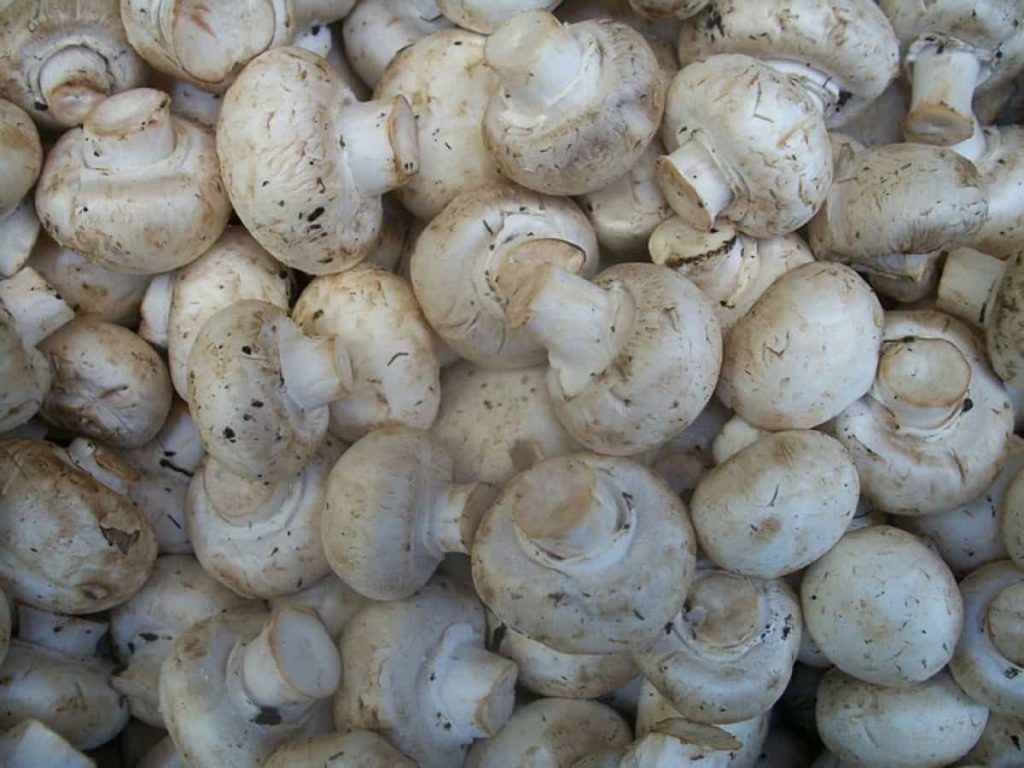
Top 22 steps/ways to boost mushroom yield
Step 1: important parameters for affecting Mushroom yield
Mushroom production and biological performance are essential parameters that growers need to understand and improve. Mushroom cultivation is the easiest process. You can earn more profit with less investment in a Mushroom farming business. Let’s learn all about it and increase your income by making Mushrooms. Profits from Mushroom cultivation depend on different types of Mushrooms.
Mushroom farming is an amazingly lucrative business. If you invest time and effort, growing Mushrooms for profit can lead to a full-time job. Many factors affect your profit margins: the size and location of the Mushroom farm, the varieties grown, diseases, management, advertising, marketing, and years in the industry. A small-scale operation costs only two hundred, as it requires minimal equipment.
If you have a dark room or a shady backyard, you can set the spawn on the substrate for Mushroom cultivation. Once satisfied with this process, you can consider expanding in a more commercial management manner, hiring employees to increase productivity. Factors affecting crop yields, quality, and quantity, are the incidence of pests/pathogens and the unavailability of pure spawn quality.
Step 2: You should know about Mushroom yield
Simply put, Mushroom yield is the number of fresh Mushrooms you can produce with space, substrate, and other constraints. The higher your yield, the more cost-effective your growth will be. Production should be determined using the total weight of fresh Mushrooms from all flush until the substrate block is wholly removed.
You may find that your Mushroom production may vary between flushes, which is why total production use is a good indicator of efficiency. That being said, sometimes it is better to get higher yields on the first flush, and future flush may have lower profits.
Step 3: Choosing high performing strain for increasing productivity
The stress you choose for your growth can significantly impact productivity. Mushroom culture begins when the hyphae of two compatible germinating spores mate and grow as mycelium. It means that when eggs start to grow, there are countless gazelles of different possible combinations or “strains,” with small genetic differences affecting yield.
Fortunately, high-performance strains have been carefully crafted and improved to produce good and reliable products. These tensions are preserved as commercially available cultures. Of all the factors involved in maximizing production, the choice of good productive trade tension is probably the most important.
In case you missed it: Hydroponic Mushroom Farming – Production, Cultivation
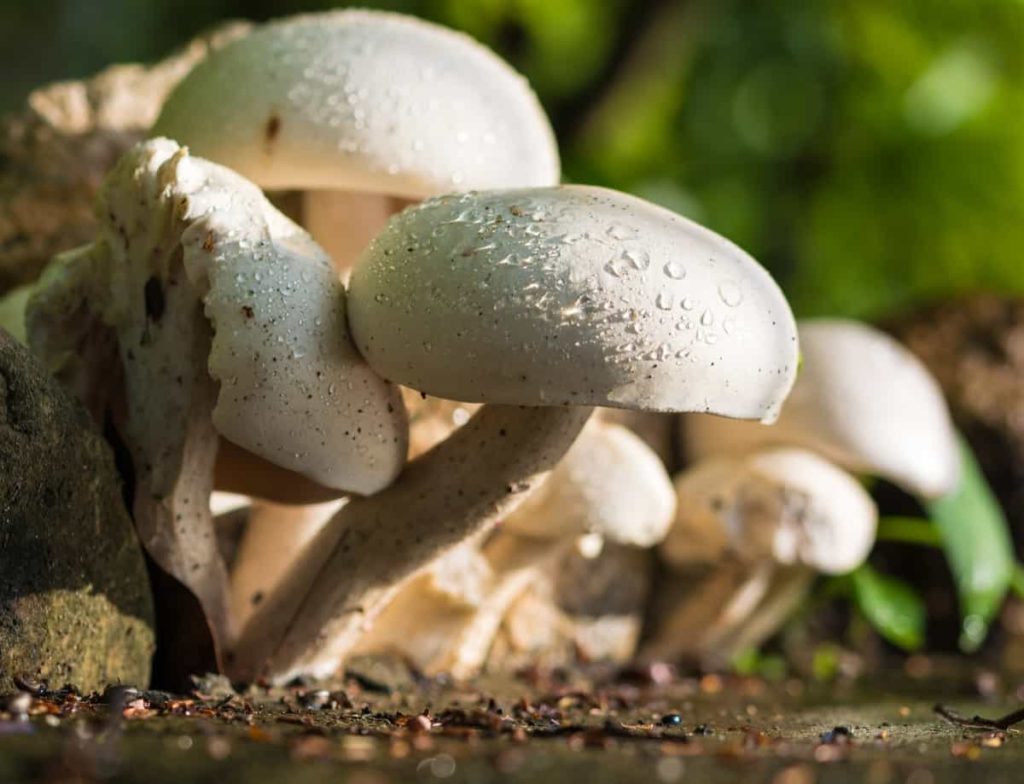
Step 4: Choose the high yield type of Mushroom
The production cost of different Mushrooms varies, and you have to choose one according to your budget. Mushrooms are of the following species:
- Wild Mushrooms like Shiitake, Lion’s Mane, and Oysters. They are profitable and easy to grow and have some medical benefits.
- Button Mushroom.
- Mushrooms of paddy straw.
More and more supermarkets and grocery stores worldwide are stocking up on exotic Mushrooms, such as the Pink Oyster Mushroom. Find the most profitable Mushroom varieties to grow. The most profitable gourmet Mushroom varieties to grow are oyster and shiitake mushroom varieties.
Step 5: Determine the best climate for Mushroom growth
Since oysters and sheath Mushrooms can be grown indoors, you don’t have to worry about the climate. Any good shed, greenhouse, garage, basement, or warehouse can work. Overall, with these species, the external environment has little effect on their ability to grow. Naturally, Mushrooms grow in humid environments. Oyster Mushrooms grow in a variety of hot and cold seasons. Pearl oysters, blue oysters, and king oysters emerge from the forest logs and stump at cold temperature levels.
Golden oysters, phoenix oysters, and pink oysters prefer warmth. Shiitake Mushrooms grow best on deciduous trees in Southeast Asia’s hot, humid region. The climate is more important if you plan to grow Mushrooms in your backyard, but as long as you keep them moist and shady, they should not be a problem to grow.
Step 6: Select good quality Mushroom spawn
Spawn is planting material for Mushroom farming, a seed of a Mushroom. The production of Mushroom spawn requires more technical expertise and investment. Large companies produce most Mushroom spawn. Good quality Mushroom spawn has the following characteristics.
- Spawn in the compost should grow faster.
- Provide initial pruning after casing.
- High yields
- It should make the greater grade of Mushroom.
Step 7: Light requirement for Mushroom growth
Like green plants, Mushrooms cannot extract sun nutrients, so they do not need light. The advantage of growing Mushrooms in the dark is that the darkness preserves the moisture that Mushroom seeds need to regenerate. A basement common and other buttons provide ideal conditions for growing Mushrooms, and logs used for growing shiitake Mushrooms should be kept out of direct sunlight.
Step 8: Gain experience to boost Mushroom yield
Mushroom cultivation requires study and experience. You need to know the science and technology of growing Mushrooms. There are many online courses available.
Step 9: Increase the production of button Mushrooms
Protein-rich supplements such as cottonseed meal, soybean meal, alfa-alfa meal, feather meal, etc., have been found to increase Mushroom production. Supplementation can be done either during spawning or after spawning before casing. The latter is more beneficial.
In case you missed it: Organic Mushroom Farming, Cultivation Practices
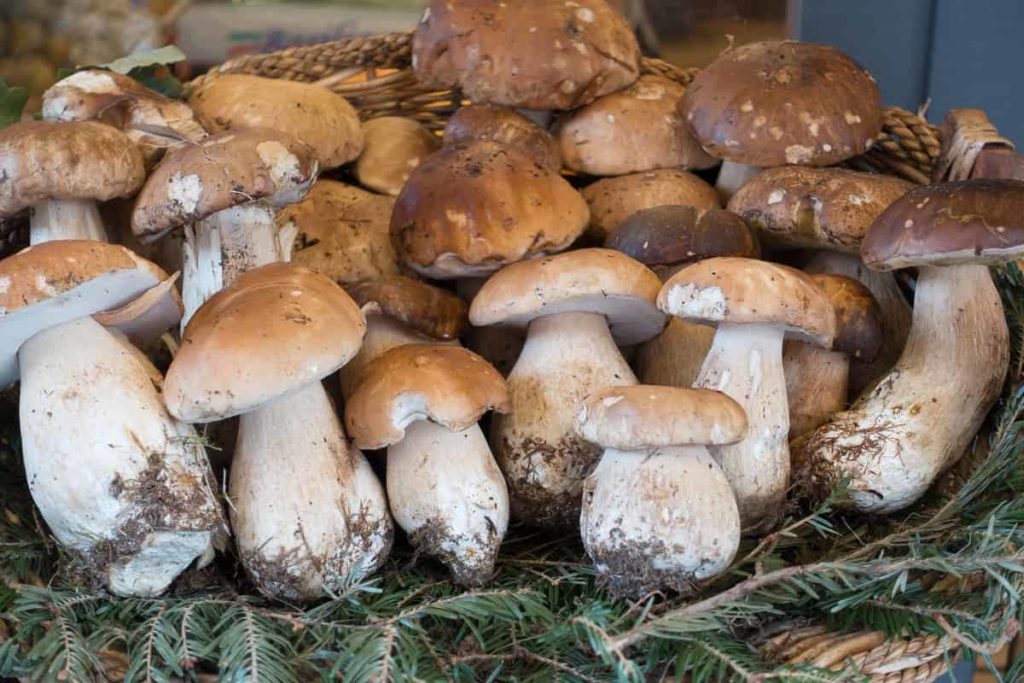
Step 10: The bed size for Mushroom cultivation
The size should be slightly larger than the bed and strong enough to hold the weight of the bed. Since Mushrooms are grown on high platforms, brick and clay foundations must be raised. The foundation-shaped bamboo is placed on the foundation of any strong material frame. At least 4-5 bundles of soaked straw are placed on the frame. There are four more bundles but with loose ends in opposite directions.
Then, these eight bundles together form the first layer of the bed. About 11-12 cm from the first layer. Grain eggs are scattered some distance away. Once the last layer is formed, cover the entire bed with a transparent plastic sheet. However, proper care should be taken to ensure that the sheet is not in contact with the bed.
Step 11: Tips to stimulate the growth of Mushrooms
In Mushroom cultivation, high voltage electrical stimulation is effective for fruit body development. The high voltage bed attached to the Mushroom cultivation bed generates an intense electric field inside the substrate.
Step 12: Supplementation to produce large, healthy fruit
Supplementation is the process of adding nitrogen-rich nutrients to the Mushroom substrate to increase potential yield. It works by providing mycelium with a great nutritional base to support strong mycelium and produce large, healthy fruit. Mushroom supplementation is an agricultural process in which nutritional amendments to the substrates are employed for Mushroom cultivation. Various nitrogen and carbohydrate-rich supplements have been studied in crops that significantly affect Mushroom production and quality.
However, there is still controversy over the nutritional requirements of Mushrooms and the need for new commercial additions. The addition of external nutrients increases the productivity of some low-yielding varieties of Mushrooms and is, therefore, a useful tool for introducing new commercially viable types to the industry. The supplement is usually obtained by adding bran to the substrate, wheat bran, or oat bran.
Adding too many supplements, however, will have detrimental effects. Additions increase the likelihood of contamination and thus reduce your product’s profit. Use the supplement carefully; start small and gradually increase to maximize results. Increasing your spawn: bulk substrate ratio is one way to increase your nitrogen content, and it’s a form of supplementation. Again, too much spawn will ultimately lead to reduced returns. It would help if you found your lovely place.
Step 13: Increase Mushroom spawn
Mushrooms need a moist environment to grow, even to make Mushrooms spawn. You want to pour boiling water over it, let it cool, and drain the excess water. Boiling water helps kill most wild molds, yeasts, or other fungi on cardboard or just floating in the air.
Step 14: Factors affecting Mushroom growth
The main environmental factors affecting Mushrooms’ height, diameter, and cap size are air temperature, humidity, fresh air, and compact material. P. ostreatus can be grown extensively and adapt to different temperatures.
In case you missed it: Oyster Mushroom Farming in India – A Full Guide
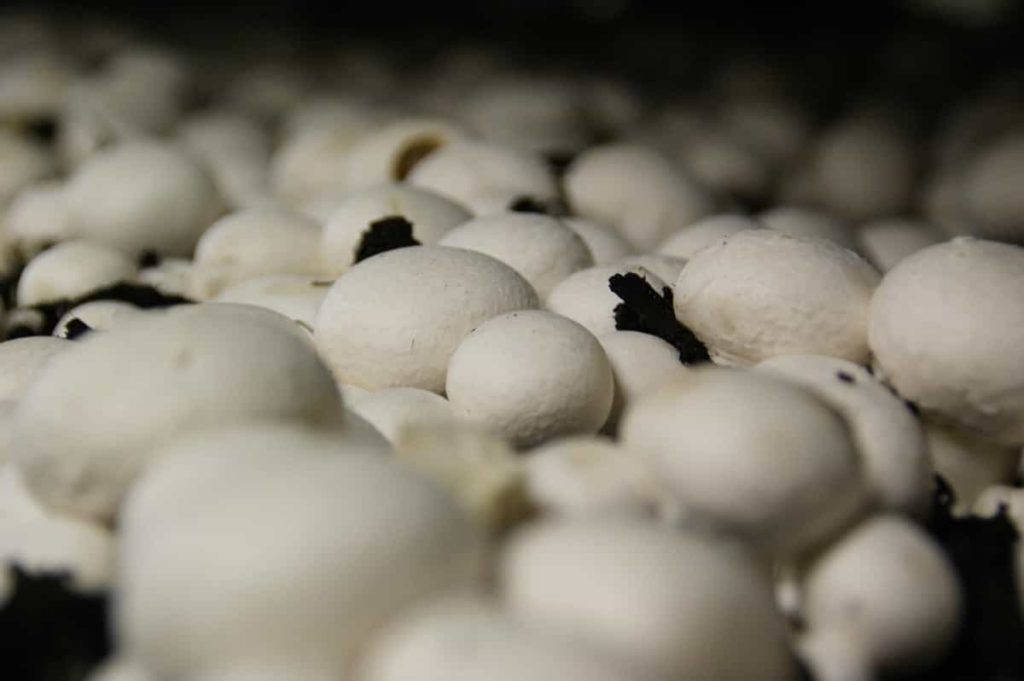
Spawning – The next step in the button Mushroom growing process is Spawning. It is the process of sowing mycelium in the beds. There are two ways to spawn: the first is to spread the compost on the bed of the tray, and the second is to mix the mycelium with the compost before spreading it on the tray. It would help if you covered the tray with newspaper after spraying water and spawning, keeping the tray moist.
Casing – Now, you need to cover the tray with a thick layer of soil. You can make this soil by mixing garden soil and rotten cow dung. This soil is known as casing soil. This casing soil has good water holding capacity.
Step 15: Nutrients for Mushroom growth
Mushrooms synthesize these nutrients from organic matter. They need special nutrients to grow sugar, starch, lignin, fat, protein, and nitrogen. Compost made from manure and straw contains ideal amounts of these nutrients for growing button Mushrooms, while shiitake can extract the nutrients they need from log wood or sawdust where they grow. A mixture of corn, peat moss, and sand is an alternative to manure and straw.
Step 16: Making Mushroom compost to increase growth
Mushroom compost develops the raw ingredient’s chemical nature changes with the activity of microorganisms. These events result in a food source suitable for growing Mushrooms and excluding other fungi and bacteria. Adequate moisture, nitrogen, oxygen, and carbohydrates should be present throughout the process; otherwise, the process will stop. Water and supplements are added occasionally, and the compost pile is given air as it passes through the turner.
The quality of the raw material used to make Mushroom compost is highly variable and is known to affect fertilizer performance in terms of spawn run and Mushroom production. The geographical source of wheat straw, variety (winter or spring), nitrogen fertilizers, plant growth regulators, and fungicides can affect fertilizer production. Wheat straw should be stored under the lid to reduce the growth of unwanted and potentially detrimental fungi and bacteria before using it for composting.
Step 17: Tips to improve Mushroom’s business
Tips for increasing Mushroom growth
- Location
- Gain experience
- Collection of spawn
- Materials needed
- The process of growing Mushrooms
- Choose the type of Mushroom
- Maintenance and handling
Step 18: Tips to maximize Mushroom yield
To achieve maximum Mushroom yield per ton of compost, farmers add extra nutrients to the compost. It can be formaldehyde denatured soya products, feather meal, or a protein/carbohydrate, lipid, and protein mixture calcium/amine salts carboxylic acid-treated with antibacterial agents.
In case you missed it: Mushroom Cultivation Income, Cost, Yield, Profits
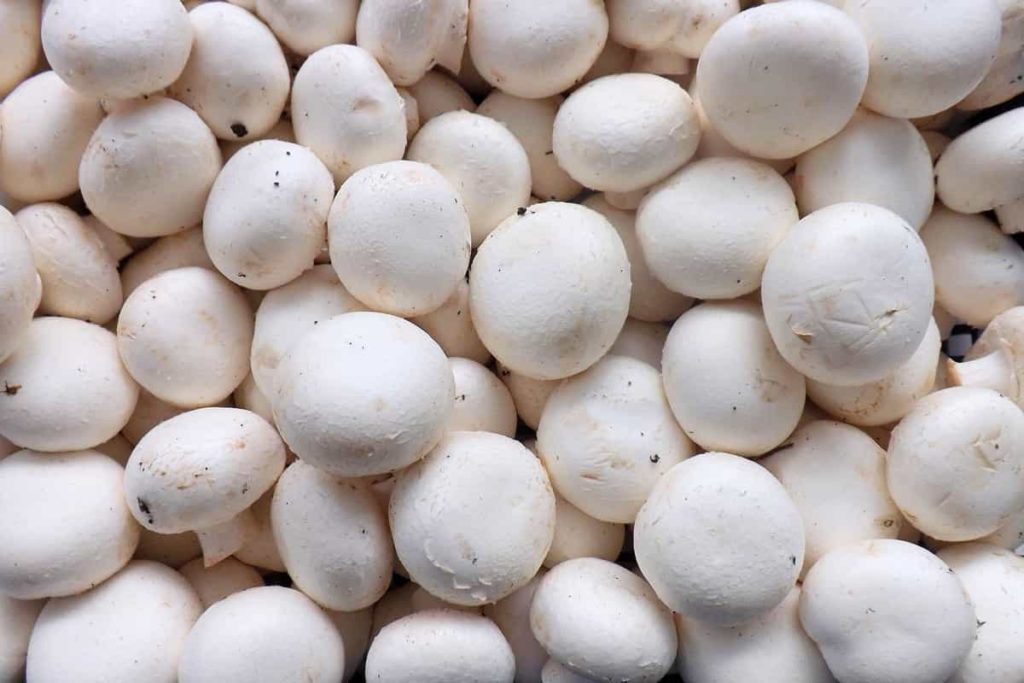
Step 19: Increase income from Mushroom production
Mushrooms are an important cash crop of horticulture. Biologically it is a fungus. The fruit is a fleshy body that grows on humus, soil, and wood. This crop is grown mainly in closed rooms. This crop offers attractive returns compared to other outdoor horticultural crops. World Mushroom production is growing at an annual rate of about 8-10%. Mushrooms are rich in vitamins, minerals, and various medicinal ingredients.
Five commercial Mushrooms are mainly grown in India. Button Mushrooms, Oyster Mushrooms, straw Mushrooms, milky Mushrooms, and shiitake Mushrooms are essential.
The most important thing in Mushroom production is that it can be grown in any year’s season. Not only that, but its production cost is lower than other crops. The main reason behind this is its amazing ability to grow on agricultural residues. Similarly, the labor cost in its production is less than that of other crops. If we look at its other benefits, it is clear that it can be more profitable than the cost. In other words, it is a cash crop that matures in a very short time. It does not require long and wide fields for cultivation and can be easily cultivated even in urban areas.
Step 20: Spending your harvest time to get more yield
Choosing to pick your Mushrooms greatly impacts overall production and biological performance, and choosing Mushrooms when they are small. Late picking of Mushrooms results in higher overall yields, but their quality may be lower as the fruits have passed their prime. To get the best yield for the desired quality, every farmer should be able to find a sweet place to harvest his Mushrooms. The exact timing of Mushroom pruning will depend on the type of Mushroom and the different ways you store your Mushrooms before the Mushroom.
Step 21: Mushroom yield per plant
Depending on the type and variety cultivated, farmers can harvest an average of 3-4 white-button Mushroom crops a year. Factors affecting crop yields, quality, and quantity, are the incidence of pests/pathogens and the unavailability of pure spawn quality. The average yield of Mushrooms per plant is about 400 grams (170 to 450 kg per hectare, depending on planting density).
In case you missed it: How to Grow Grafted Vegetable Plants: Benefits, and Suitable Vegetables
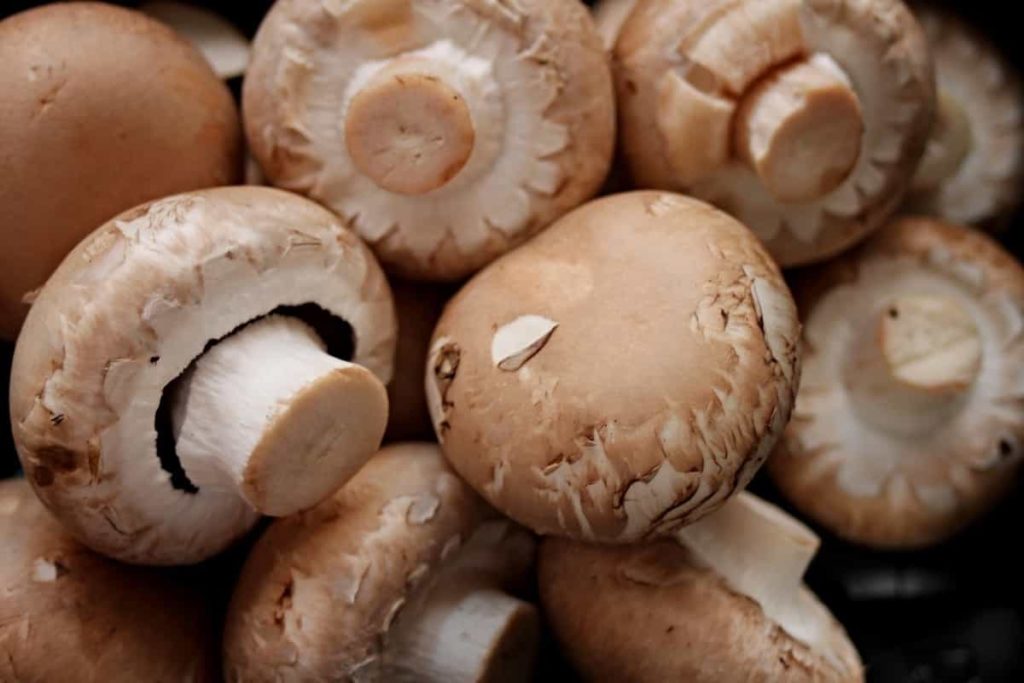
Step 22: Tips for success when growing Mushrooms for profit
Keep these tips in mind for a profitable Mushroom business. Protect your crops from disease. Viral, bacterial, and fungal infections can destroy Mushroom plants, drastically reducing profit margins. A decent management system will help Mushrooms’ cultivation, harvesting, and sale. If you are farming commercially, you will likely have employees who need to stay on track to meet your production goals.
Keep your expenses in check – Purchasing Mushroom spawn may increase, so you’ll want to know how to make your own. Growing your Mushrooms inside means you have complete control over the environment, which will help you maintain crop health.
Collect data on your crop – Gathering data will help you determine the best ways to grow the best Mushrooms. You can find the incubation periods, ideal substrates, and harvesting ways for the best-flavored Mushroom food.
Conclusion
The yield and quality of Mushrooms have been improved by mixing rice straw with legume waste. The most beneficial effect on production was when rice straw was mixed with 50% legume waste. You can easily grow Mushrooms. It is the best way to make a profit as the cost of growing Mushrooms is very low. You must follow the above steps to boost Mushroom yield to produce more.
- Economical Aquaculture: A Guide to Low-Budget Fish Farming
- 15 Common Planting Errors That Can Doom Your Fruit Trees
- How to Make Houseplants Bushy: Effective Tips and Ideas
- Innovative Strategies for Boosting Coconut Pollination and Yield
- Pollination Strategies for Maximum Pumpkin Yield
- The Complete Guide to Chicken Fattening: Strategies for Maximum Growth
- Natural Solutions for Tulip Problems: 100% Effective Remedies for Leaf and Bulb-Related Issues
- Revolutionizing Citrus Preservation: Towards a Healthier, Greener Future
- Natural Solutions for Peony Leaf and Flower Problems: 100% Effective Remedies
- Maximizing Profits with Avocado Contract Farming in India: A Comprehensive Guide
- Natural Solutions for Hydrangea Problems: 100% Effective Remedies for Leaf and Flowers
- The Ultimate Guide to Choosing the Perfect Foliage Friend: Bringing Life Indoors
- From Sunlight to Sustainability: 15 Ways to Use Solar Technology in Agriculture
- The Ultimate Guide to Dong Tao Chicken: Exploring from History to Raising
- The Eco-Friendly Makeover: How to Convert Your Unused Swimming Pool into a Fish Pond
- Mastering the Art of Delaware Chicken Farming: Essentials for Healthy Backyard Flocks
- 20 Best Homemade Fertilizers for Money Plant: DIY Recipes and Application Methods
- How to Craft a Comprehensive Free-Range Chicken Farming Business Plan
- Brighten Your Flock: Raising Easter Egger Chickens for Beauty and Bounty
- How to Optimize Your Poultry Egg Farm Business Plan with These Strategies
- Subsidy for Spirulina Cultivation: How Indian Government Schemes Encouraging Spirulina Farmers
- Ultimate Guide to Raising Dominique Chickens: Breeding, Feeding, Egg-Production, and Care
- Mastering the Art of Raising Jersey Giant Chickens: Care, Feeding, and More
- Ultimate Guide to Raising Legbar Chickens: Breeding, Farming Practices, Diet, Egg-Production
- How to Raise Welsummer Chickens: A Comprehensive Guide for Beginners
- How to Protect Indoor Plants in Winter: A Comprehensive Guide
- Ultimate Guide to Grow Bag Gardening: Tips, Tricks, and Planting Ideas for Urban Gardeners
- Guide to Lotus Cultivation: How to Propagate, Plant, Grow, Care, Cost, and Profit
- Agriculture Drone Subsidy Scheme: Government Kisan Subsidy, License, and How to Apply Online
- Ultimate Guide to Raising Araucana Chickens: Breed Profile, Farming Economics, Diet, and Care
- Bringing Hydroponics to Classroom: Importance, Benefits of Learning for School Students
- Ultimate Guide to Raising Polish Chickens: Breed Profile, Farming Economics, Diet, and Care
- Ultimate Guide to Raising Australorp Chickens: Profile, Farming Economics, Egg Production, Diet, and Care
- Silkie Chicken Farming: Raising Practices, Varieties, Egg Production, Diet, and Care
- Sussex Chicken Farming: Raising Practices, Varieties, Egg Production, Diet and Care
- Homemade Feed Formulations for Livestock: Discover Cost-effective Starter to Finisher Feed Recipes
thank you for the good information kindly could you send me This all information on my email. With all the table in contents.